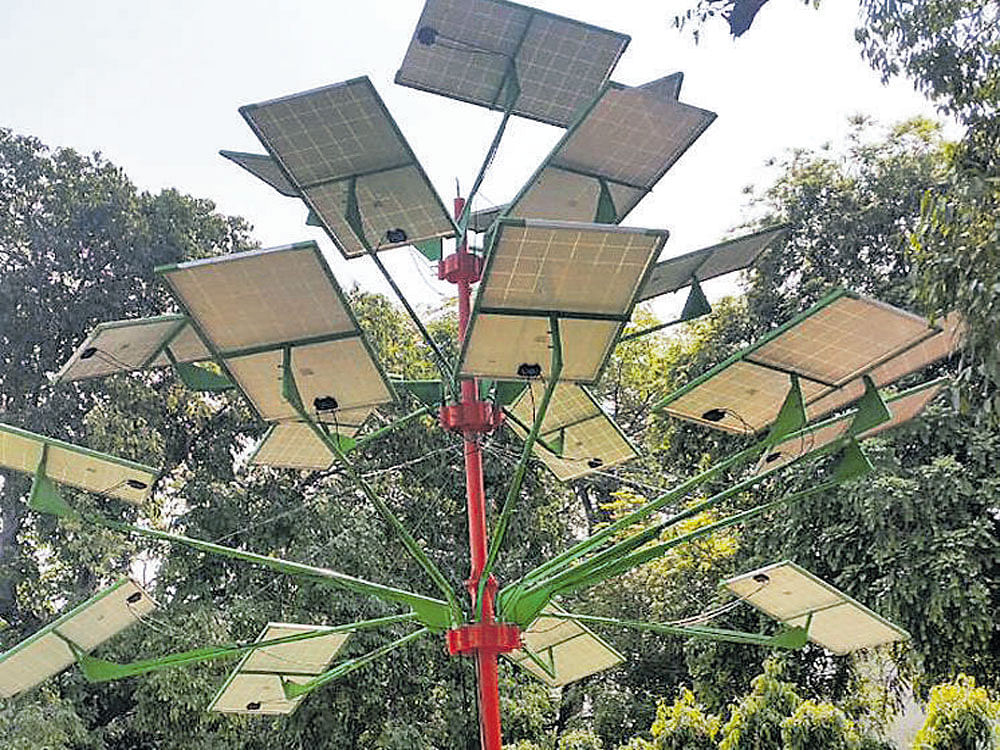
An indigenous solar tree that requires a very small patch of land but could light up to 20 street lamps is set to come alive in Delhi on Saturday.
A patented innovation from the Council of Scientific and Industrial Research’s (CSIR) Central Mechanical Engineering Research Institute (CMERI), Durgapur, the solar tree vastly reduces the land requirement for installing the flat panels, which is one of the biggest handicaps for the expansion of solar energy.
Because of the vast available space, policy makers at present consider Rajasthan, Gujarat and Maharashtra as ideal locations to harness solar power. The solar tree with multiple branches, each carrying a solar panel, could change the landscape.
“Each tree requires an area not larger than four square ft (2ft x 2ft), which is half of the desk space in an ordinary office, but can produce 3-5 kilowatt of electricity,” Sibnath Maity, chief scientist at CMERI, who designed the tree told DH.
Two trees are now set to be operational in Delhi. The first one of 5 kw power would be at the residence of Minister of Science and Technology Harsh Vardhan, while a smaller one with a capacity of 3 kw would come live at the CSIR headquarters.
“Capacity of each solar tree could be changed depending on the need. The space below the tree could be utilised unlike the flat solar panels,” explained CMERI director Harish Hirani.
In the coming months, CMERI team would focus on two other solar tree projects. The first one is to create a park in Damodar Valley Corporation premises by erecting solar trees around a garden, while CMERI intends to set them up in several primary schools by March 2017.
While solar trees were developed abroad in the past, Maity claims his design has several advantages which aid CMERI trees to use sun light more efficiently throughout the day.
